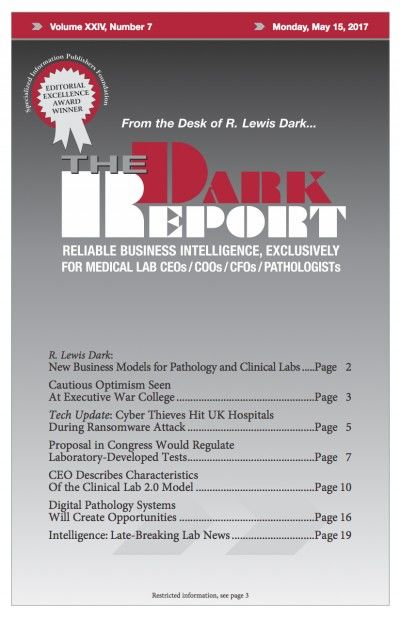CEO SUMMARY: Moving away from volume-based care will not be easy for clinical labs. After all, high volume sustains labs. But labs seeking to transition away from fee-for-service to value-based care must have a seat at the table where decisions are made, said a lab CEO who is part of Project Santa Fe, which wants …
CEO Describes Characteristics Of the Clinical Lab 2.0 Model Read More »
To access this post, you must purchase The Dark Report.


